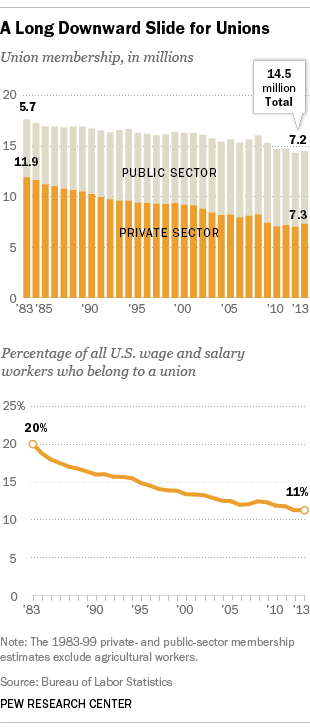A Tough Labor Day for Unions
This Labor Day, as Americans are fitting in one last trip to the beach or holding backyard barbeques, labor unions are left with little to celebrate. Union membership in the private sector continues to decline as more and more workers are deciding to not join unions.
Labor Day began in 1882 when thousands of union members took the day off in what amounted to a massive strike. In the early years, Labor Day celebrations often amounted to massive political protests and sometimes violence broke out. Labor Day became an official holiday in 1894, after President Grover Cleveland had to deploy more than 10,000 troops to break a national strike of railroad workers. In order to offer unions an olive branch, Cleveland signed legislation making Labor Day a national holiday.
This year the news for unions was not good. Wisconsin became the 25th state to enact a right-to-work law. This means workers in Wisconsin can no longer be forced to join a union or pay forced union dues. Right-to-work laws continue to be very popular with the public. In 2014, Gallup found that 71 percent of Americans support right-to-work, while only 22 percent oppose.
The increase in right-to-work laws comes at a time when fewer and fewer Americans are joining labor unions. In fact, only 6.6 percent percent of private sector workers are union members. In 1973, almost 25 percent of private sector members belonged to unions.
However, the one place were union membership has grown is in the government. In 2014, almost 36 percent of government workers belonged to a union. While the number of private sector union members has declined by over four million workers since 1983 – during the same time period over one million more government employees became unionized.
The simple reason for the growth in government unions is the government is a monopoly and does not have competitors. Therefore, only taxpayers are armed by costs. In the private sector, forced union laws make states less competitive and lead to jobs losses, as discussed in-depth in the ALEC publication, Rich States, Poor States.
As more states pass right-to-work laws and workers have the freedom to choose whether to join a union or not – the number of private sector union members will most likely continue to decline. This means more tough Labor Days for unions.

